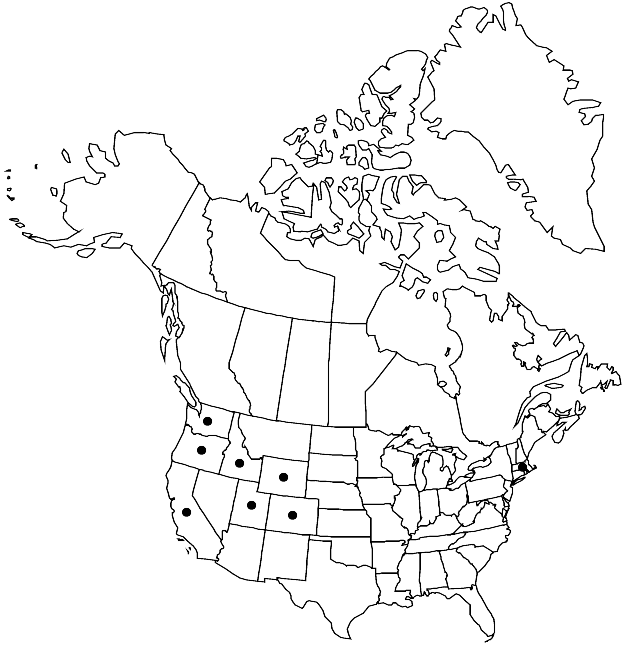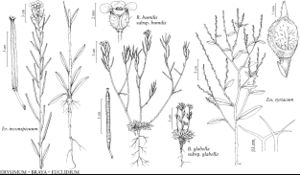Euclidium syriacum
in W. Aiton and W. T. Aiton, Hortus Kew. 4: 74. 1812.
Plants scabrous throughout, trichomes to 1 mm. Stems often ascending, (rigid), usually branched basally and near middle, (0.4–)1–4(–4.5) dm. Basal leaves similar to cauline. Cauline leaves petiolate [(0.2–)0.5–2(–2.5) cm] or (distal) sessile or subsessile; blade oblong, oblong-lanceolate, or elliptic, (1–)1.5–7(–9) cm × (3–)7–20(–30) mm (smaller distally), base cuneate, margins usually entire, dentate, or repand, rarely pinnatifid, apex acute or obtuse. Fruiting pedicels appressed to rachis, 0.5–1(–1.2) mm (ca. 1/2 as wide as fruit). Flowers: sepals 0.6–0.9 × 0.2–0.4 mm, sparsely pubescent; petals 0.9–1.3 × 0.1–0.2 mm, claw 0.4–0.6 mm; filaments 0.5–0.8 mm; anthers 0.1–0.2 mm. Fruits erect, 0.2–0.3 cm × 1.5–2 mm, 2-seeded; replum expanded, to 1.5 mm wide basally, narrowed to apex; style curved away from rachis, subconical, 1–1.8 mm, sparsely pubescent. Seeds 1.3–1.7 × 0.8–1.2 mm. 2n = 14.
Phenology: Flowering May–Jun.
Habitat: Waste places, roadsides, flats
Elevation: 0-2500 m
Distribution

Introduced; Calif., Colo., Idaho, Mass., Oreg., Utah, Wash., Wyo., Europe, Asia, introduced also in Australia.
Discussion
Euclidium syriacum is known in the flora area from relatively few collections. The Massachusetts record, Knowlton s.n. (GH), was collected nearly a century ago; it is not known if the species has persisted in that state.
Selected References
None.
